INDIAN ARMED FORCES CHIEFS ON OUR RELENTLESS AND FOCUSED PUBLISHING EFFORTS

The insightful articles, inspiring narrations and analytical perspectives presented by the Editorial Team, establish an alluring connect with the reader. My compliments and best wishes to SP Guide Publications.

"Over the past 60 years, the growth of SP Guide Publications has mirrored the rising stature of Indian Navy. Its well-researched and informative magazines on Defence and Aerospace sector have served to shape an educated opinion of our military personnel, policy makers and the public alike. I wish SP's Publication team continued success, fair winds and following seas in all future endeavour!"

Since, its inception in 1964, SP Guide Publications has consistently demonstrated commitment to high-quality journalism in the aerospace and defence sectors, earning a well-deserved reputation as Asia's largest media house in this domain. I wish SP Guide Publications continued success in its pursuit of excellence.
- MoD initiates comprehensive review of Defence Acquisition Procedure 2020, pushes for defence reforms
- G7: The Swansong
- Kalinga Connect: South Asia to Polynesia
- Advanced MRSAM for India for a greater firepower
- Must Credit DRDO for Operation Sindoor, now what is next for defence R&D?
- Operation Sindoor | Day 2 DGMOs Briefing
- Operation Sindoor: Resolute yet Restrained
Indo-US Bi-lateral Defence and Strategic Partnership
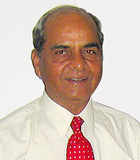 |
By Rear Admiral Sushil Ramsay (Retd) |
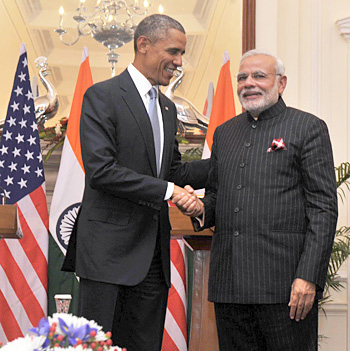
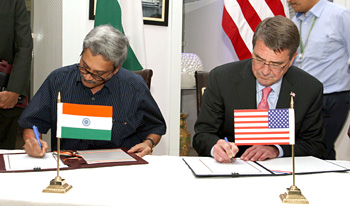
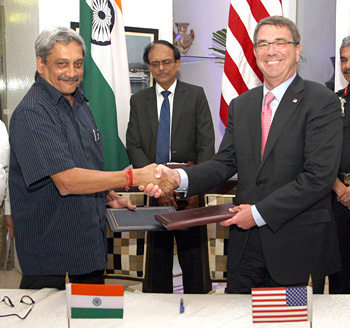
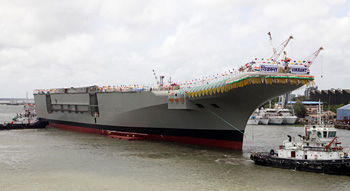
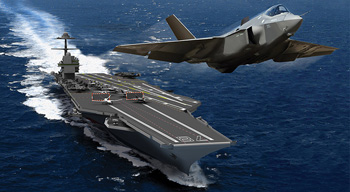
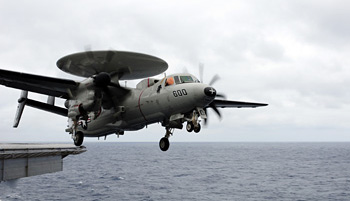
Photo Credit: PIB, Indian Navy, General Atomics, US Navy
On June 04, 2015 India and the US signed a new strategically important 10-year defence framework pact which envisaged joint development and manufacture of defence equipment and technology including jet engines, aircraft carrier design and construction.
During the recently concluded visit to India of Mr Ashton Carter, US Defence Secretary, India and the US also finalised two project agreements for hi-tech mobile power source and next generation protective suits for chemical and biological warfare.
2015 Framework for the India-US Defence Relationship
The foundation of the recently concluded framework agreement was actually laid during the parleys between the US President, Barack Obama and Prime Minister Narendra Modiduring the former's visit to India as the Chief Guest at the Republic Day parade on January 26, 2015. The one-on-one discussions between the two had mainly focussed on issues ranging from maritime security and joint training.
Towards culmination of the efforts, Defence Minister Manohar Parrikar and the visiting US Defence Secretary Ashton Carter signed the 2015 Framework for the India-US Defence Relationship on June 04, 2015. The long-term Agreement is the consolidation and up-grade of the previous framework and successes to guide the bilateral defence and strategic partnership for the next decade.
The salient features of the new Framework agreement provides for additional avenues for high level strategic discussions, continued exchanges between the armed forces of both countries, and strengthening of defence capabilities. The Framework also encompasses expediting discussions to take forward co-operation on jet engines, aircraft carrier design and construction, and other areas, as also recognises the transformative nature of the Defence Technology and Trade Initiative (DTTI). The two sides have also agreed to pursue co-development and co-production projects that will offer tangible opportunities for American defence industries to build partnership with the Indian industries including in manufacturing under 'Make in India'.
India's Next-Generation Aircraft Carrier
Viewing from the perspective of further augmenting and consolidating the Maritime Capability Perspective Plans the Framework agreement provides for new dimension which can rejuvenate the force development plans for the Indian Navy to the unprecedented heights. The United States and India have agreed to form a working group to explore the joint development of India's next-generation aircraft carrier. While the Indian Navy has already begun design work, wide-ranging co-operation with the United States has enormous potential and offers India the opportunity to acquire the largest and the most capable warship possible.
EMALS
|
Setting the preparatory framework in place Mr Ashley J. Tellis, Senior Associate, South Asia Programmes, Carnegie Endowment for International Peace in his Paper of April 22, 2015 stated, "Such collaboration would increase the Indian Navy's combat power and would resonate throughout the Asian continent to India's strategic advantage. The most valuable U.S. contributions are likely to materialise in the fight, possibly in the move, and hopefully in the integrate functions". He further articulated the following tenets which could be used for meaningful collaboration between the two countries:- Bringing Cooperation into Focus The prospect of a major Chinese naval presence in the Indian Ocean transforms India's hitherto secure rear into a springboard from which coercive power can be brought to bear against the Indian landmass. The principal objective underlying bilateral cooperation should be to ensure that India's next-generation aircraft carrier—to include its air wing and its capacity for combat operations—will be superior to its Chinese counterparts. Though cooperation on the fight, move, and integrate functions is likely to be most indispensable and rewarding, joint development should in principle span all the mission areas involved in carrier design. Above all else, the Indian Navy should not succumb to the temptation to make collaborative development merely an exercise in procuring technology. The Fight Function Explore the possibility of equipping India's carrier with the Electro-Magnetic Aircraft Launch System (EMALS). Offer India access to various advanced aviation systems, such as the U.S. Navy's E-2C/D Hawkeye for airborne early warning and battle management and the fifth-generation F-35C Lightning strike fighter, so as to permit the Indian Navy to secure a combat advantage over its rivals' air wings. The Move Function Consider changes to current U.S. policy to allow for discussions about nuclear propulsion technology in order to, among other things, make the integration of EMALS technology a viable option for India's next-generation carrier. The Integrate Function Support a partnership between the Indian Navy and the U.S. Naval Sea Systems Command, and U.S. private industry as appropriate, to validate the vessel's engineering and production designs, imbibe best practices from the U.S. experience when constructing the carrier, and coordinate on sea trials prior to commissioning the ship. Encourage the conclusion of consulting contracts and memoranda of understanding between Indian shipyards and U.S. industry to assist India in incorporating advanced construction techniques when building its new large-deck carriers. |
Under development for over 25 years and manufactured by General Atomics, Electro-Magnetic Aircraft Launch System (EMALS) is the first new carrier catapult technology in 60 years which uses piston forced along by a head of steam, using computer-controlled, solid-state electrics to propel an armature down a track. Ithas been designed to replace the steam-powered launch system that has been the standard on aircraft carriers since the 1950s.
Extensive testing of EMALS has already included 134 manned launches of aircraft, including the F/A-18E Super Hornet, T-45C Goshawk, C-2A Greyhound, E-2D Advanced Hawkeye and F-35C Lightning II, in addition to launches of the EA-18G Growler and F/A-18C Hornet. Recently on June 22, 2015 for the first time installed EMALS successfully carried out an unmanned dead weight sled from under construction super aircraft carrier, USS Gerald Ford. The dead weight landed about a hundred yards from the bow of the ship under construction.
Conclusion
Factoring the extensive deliberations, consultations, evaluations, etc. the United States and India have now agreed to form a working group to explore the joint development of India's next-generation aircraft carrier, with sole intent of increasing the Indian Navy's combat power to India's strategic advantage.
Emerging reports suggest that India's biggest ever warship, the Indigenous Aircraft Carrier II (IAC II) to be christened as INS Vishal, is likely to be propelled by nuclear energy. Speculations are rife that the home grown IAC II based on US technology for joint development and construction, could be 65,000 tonnes to accommodate an Air Wing of 50 aircraft. In contrast, the recently refurbished and modernised INS Vikramadityaweighing 45,000 tonnes carries 34 aircraft on board.
Reportedly, the Ministry of Defence has already begun the detailed survey of the infrastructure, capacity and capability indigenously available with the Indian shipyards both in public and private sectors which can be assigned the manufacturing of super aircraft carrier.
Indeed, the nuclear powered aircraft carrier comes with an exorbitant price tag, perhaps three to four times over the cost of its conventional variant.While the types of aircraft which will be based on the IAC II is yet to be decided, mere selection of nuclear power propulsion for a possible65,000 tonnes carrier offers the flexibility for induction of a mix of heavier twin-engine aircrafts capable of multi-missions/roleswith endurances to operate anywhere in the maritime domain of interest to India on a prolonged mission.
India is keeping a watchful eye on the development ofEMALS. With nuclear power propulsion, EMALS will be a natural choice for faster sortie generation rates and efficient launches from the deck of Vishal.Additional advantage that can accrue by electing the system that the carrier would be capable of embarking an Air Wing of 50 aircraft with capability to undertake multi-missions/roles.Vishal could truly emerge as an instrument of power projection and capable of combat operations at extended ranges and remain deployed for prolonged period.
However, the main focus would remain on the instrument for successful and efficient transfer of nuclear power technology to propel a super aircraft carrier to be indigenously constructed in India. It will indeed be a litmus test of the existing US foreign policy which has thus far denied the cutting edge technologies to any of its allies!!





